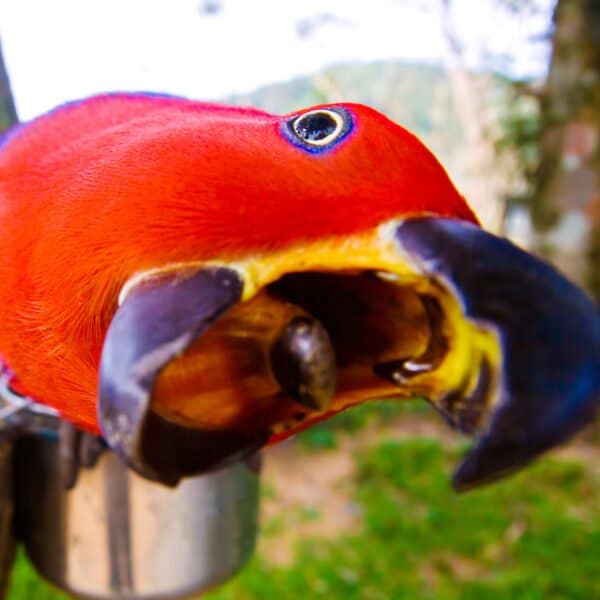Last Updated on by Mitch Rezman
Love Birds are prolific shredders The females will pack their rump feathers with the shredded paper Males will make confetti
This helps them carry more nesting material back to the nest. In Love Birds, three of the nine species are dimorphic. A species is dimorphic if the cock is visibly different in color from the hen.
The following three love bird species, Madagascar Love Bird, Red-faced Love Bird, and Abyssinian Love Bird, fall into this category.
The other six species, Fischer’s Love Bird, Nyasa Love Bird, Black-cheeked Love Bird, Masked Love Bird, Peachfaced Love Bird, Black-collared Love Bird are monomorphic – in other words males and females are identical
So how do you sex a monomorphic Love Bird? Introduce a piece of newspaper to a Love Bird six months or older – A young Love Bird will have a black stripe over the beak that usually disappears from six months to one year of age.
A male Love Bird will make confetti, a female will make strips of paper. That’s it. Got a Love Bird?
Want more info on Love Birds? Visit the African Love Bird Society website
Author Profile
Latest entries
 The Traveling BirdJune 26, 2025Can You Name 5 Parrot Species That Are Living Wild in the USA?
The Traveling BirdJune 26, 2025Can You Name 5 Parrot Species That Are Living Wild in the USA? Bird BehaviorJune 26, 2025How is it Parrots Are Problem Solvers Social Animals and Even Use Tools?
Bird BehaviorJune 26, 2025How is it Parrots Are Problem Solvers Social Animals and Even Use Tools? Bird & Parrot AnatomyJune 25, 2025How a Tiny Chemical Modification Makes Parrots Nature’s Living Paintings
Bird & Parrot AnatomyJune 25, 2025How a Tiny Chemical Modification Makes Parrots Nature’s Living Paintings PigeonsJune 20, 2025How Do Parrots Thrive in Cities Outside Their Native Habitats?
PigeonsJune 20, 2025How Do Parrots Thrive in Cities Outside Their Native Habitats?



